Creative Approaches to Modern Walk-in Shower Layouts
Open walk-in showers without doors or barriers create a spacious feel. They are favored for their minimalist appeal and ease of access, making bathrooms appear larger and more modern.
Clear glass panels are a hallmark of modern design, providing transparency that enhances natural light flow and visual openness.
Integrated digital controls and thermostatic valves allow precise temperature adjustments, improving comfort and efficiency.
Using large-format tiles or natural stone surfaces adds texture and sophistication, with options for seamless transitions and minimal grout lines.
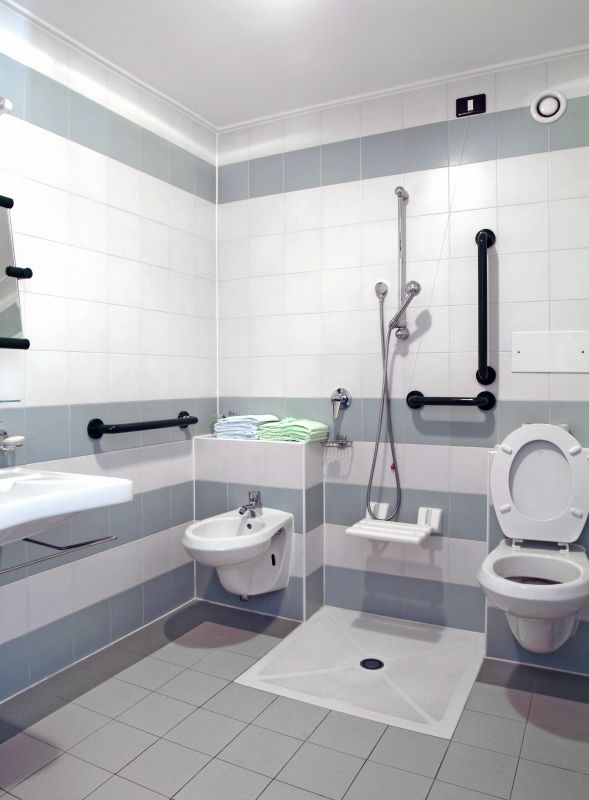
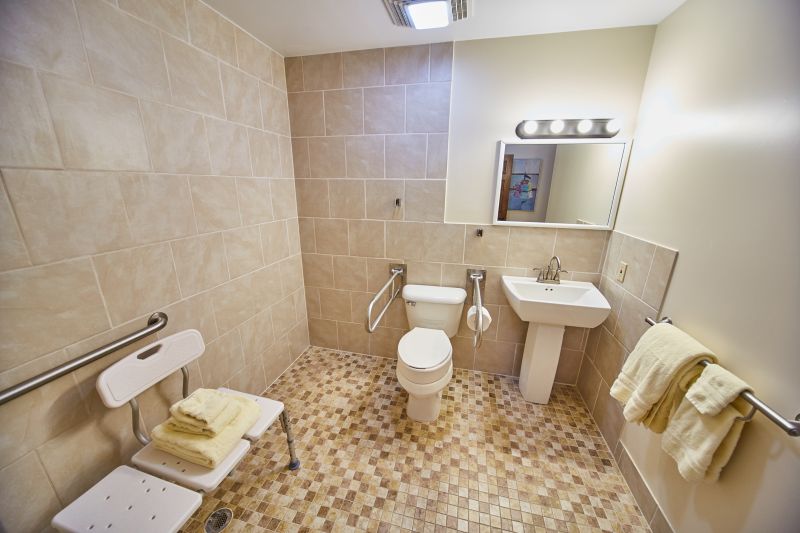

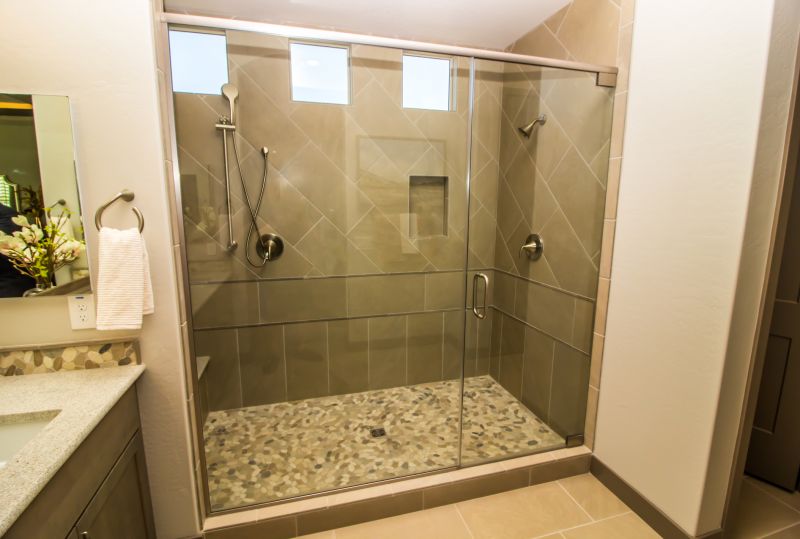

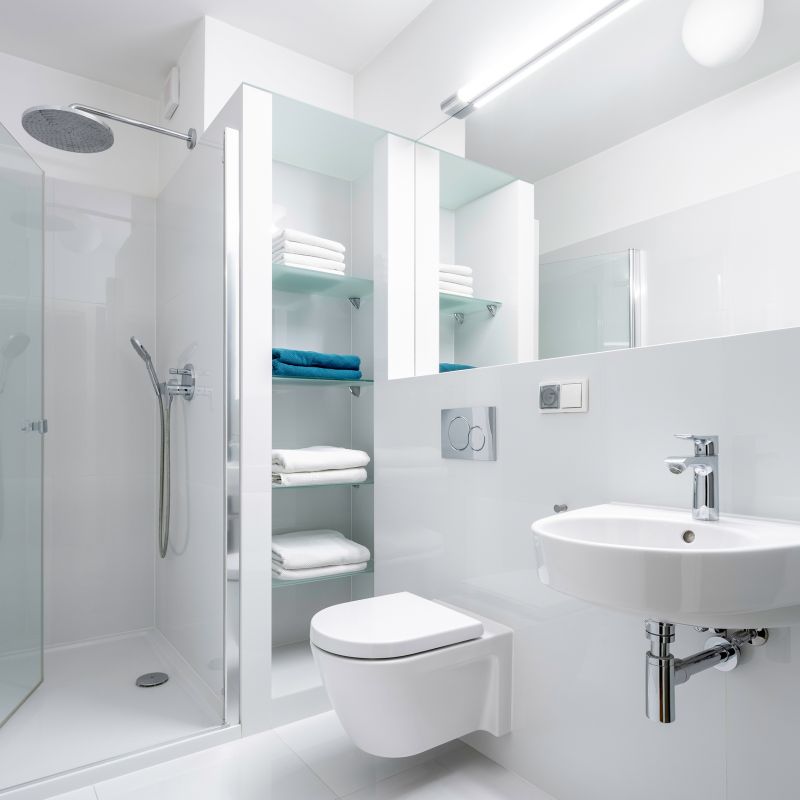
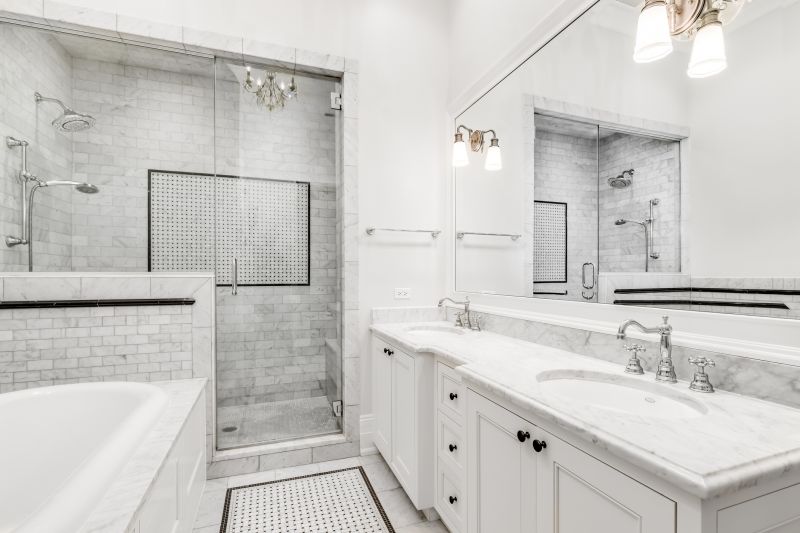
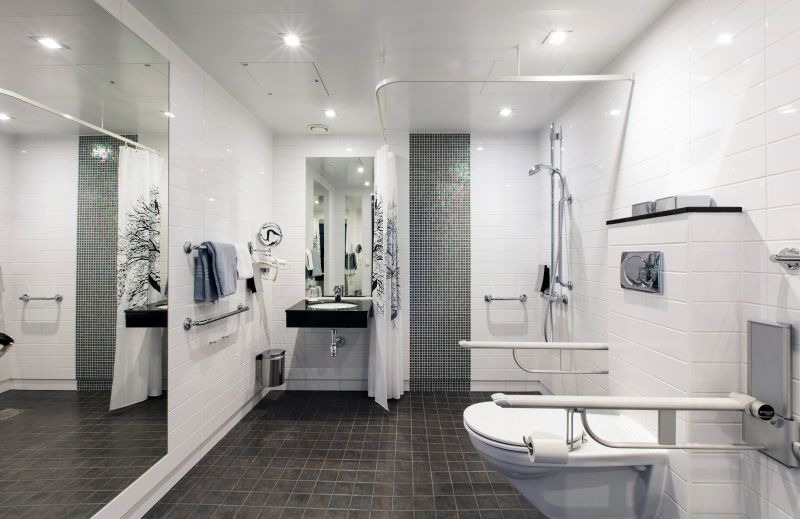
| Design Element | Description |
|---|---|
| Glass Panels | Provide a sleek, open look and maximize natural light, with options for frameless or minimal framing. |
| Rain Shower Heads | Create a spa-like experience with overhead rainfall fixtures that distribute water evenly. |
| Niche Storage | Built-in recessed shelves for toiletries that maintain clean lines and accessibility. |
| Lighting | LED strip lighting or recessed fixtures enhance visibility and ambiance. |
| Flooring | Slip-resistant tiles with textured surfaces improve safety and style. |
| Seating | Integrated benches or stools for comfort and convenience. |
| Color Palette | Neutral tones like whites, grays, and beiges contribute to a modern aesthetic. |
| Hardware | Minimalist fixtures in matte black, brushed nickel, or chrome complement the overall design. |
Incorporating these design ideas can significantly enhance the functionality and visual appeal of a walk-in shower. The trend towards open, minimalist, and technologically integrated showers reflects a broader movement in contemporary bathroom design. Proper planning and material selection are essential to achieve a cohesive look that balances style with practicality.
Statistics indicate that homeowners in Concord and across North Carolina increasingly prioritize modern bathroom upgrades, with walk-in showers representing a substantial segment of renovation projects. The adoption of large-format tiles and smart controls has seen a growth rate of over 20 percent annually, driven by consumer demand for sleek aesthetics and enhanced usability.




